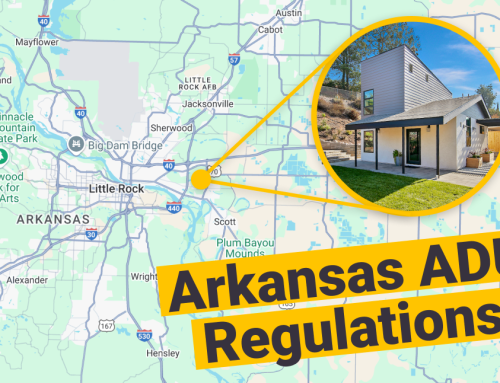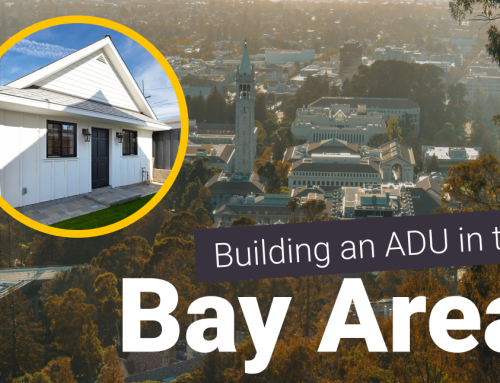Last year, we told you about the groundbreaking Assembly Bill 1033 making its way to California. AB 1033 will allow homeowners to sell their accessory dwelling units (ADUs) as condos.
Adoption has been slow as kinks have to be worked out, but we are beginning to see cities beginning to warm up to the new possibilities. This legislative change is set to revolutionize the housing market. It provides homeowners with new opportunities to monetize their properties and address housing shortages. As municipalities start to embrace these changes, the potential for increased housing options and economic benefits is becoming more apparent.
AB 1033 Explained

AB 1033 allows cities to decide whether homeowners can sell their ADUs, but still keep the land the structure sits on. If a homeowner decides to go this route, both the primary home and the ADU will be treated as condos. The owners of each will share obligations but with separate titles, both governed by an HOA.
This approach differs from traditional rental arrangements, as it enables homeowners to sell their ADUs as individual properties without becoming landlords. It aims to stimulate the housing market by providing a new supply of affordable housing options, particularly targeted at first-time buyers and young families.
It’s no secret that the majority of starting families and couples can’t afford to purchase a starter home in California. Starter homes that were once financially accessible just ten years ago now reach valuations of $700,000 and up, a price tag that is unfeasible for most young families. Can they even be called starter homes at that price? With high interest rates, inflation, and stagnant incomes, this challenge becomes even more daunting.
AB 1033 aims to offer a potential solution to this problem and one city is ready to give it a go.
San Jose Becomes First City to Accept ADU Condo-zation
Since the tech boom, San Jose remains as one of the most expensive cities to live in the US with a median home value of a whopping $1.4M according to Kiplinger.
Because of the tumultuous housing market, San Jose has embraced ADUs to the fullest since, establishing itself as one of the most ADU progressive cities in California. The city is holding onto that title as it becomes the first to adopt AB 1033.
This groundbreaking move not only addresses the pressing need for affordable housing options but also positions San Jose at the forefront of innovative housing solutions in response to escalating housing costs and limited availability. Staff is currently developing submittal requirements and reference guides to assist applicants in the process.
It’s too soon to predict what the impact will be, but we can look to other cities for a glimpse of what’s possible.
ADU Condo-ization in Action

While ADU condo-ization is still fresh in California, this concept has been a staple in Portland, Oregon housing market for a few years now.
Portland officially allowed the condo-ization of ADUs starting in 2010. Just like in California, this decision aimed to provide homeowners with more flexibility in utilizing their properties and increasing housing options within the city.
The results have been incredible.
“By condo-izing ADUs, we’re creating an opportunity for people to purchase a home that otherwise couldn’t afford to live in a new construction home in a highly desirable walkable neighborhood.” – Eric Thompson of Oregon Homeworks
Oregon Homeworks was the builder of two mirrored units known as the Electric Slide ADUs. Each unit span 800 sq ft across two stories, each featuring two bedrooms and two bathrooms. The most interesting part? The two individual ADUs stand in what used to be the backyard of a duplex.

Thompson notes that the large backyard of the duplex was underutilized. Adding housing back there was a no-brainer. One of the ADUs is now home to a teacher, her husband, and young daughter. The stunning home is the perfect starter home for the growing family, nestled in a quiet and safe neighborhood with an elementary school just a few steps away.
Gentle density has increased all throughout Portland, as homeowners embrace the opportunity to add accessory dwelling units (ADUs) to their properties. This approach not only maximizes land use but also responds to the city’s growing housing demand without compromising its character. Neighborhoods once dominated by single-family homes now feature a mix of housing types, fostering diversity and affordability.
Challenges to Come with AB 1033

ADU by GreatBuildz
As with any substantial new bill, questions and challenges inevitably arise. Paul Dashevsky and Jon Grishpul, Founders of GreatBuildz, offered their insights on AB 1033,
“A homeowner going through the process probably will require an attorney, a surveyor and a civil engineer. It’s probably a yearlong process. Nobody knows yet.”
Homeowners have run into similar issues with Senate Bill 9, a bill that allows homeowners to split their lots and build duplexes on each lot. Because of the complex process, permitting has been reported to take up to two years just to obtain approval.
Let’s also not forget that some cities are still opposed to ADUs and increasing housing density in general.
But those stubborn NIMBYs haven’t succeeded in stopping ADU construction before, and we don’t foresee them ever being able to. We’re hopeful that in just a few years, we’ll match Portland’s streamlined process and make affordable housing a reality again. It looks like it’ll start with San Jose.
Build Your ADU with Maxable
Maxable has helped homeowners from the Bay Area all the way down to San Diego to build their ADUs one step at a time. With our curated list of reputable designers, builders, and other ADU professionals, our team will comb through your project details to match you with a local team that works within your budget, needs, and wants.
Whether you want to build for passive rental income or eventually sell your ADU under AB 1033’s new regulations, Maxable is your guiding hand. Chat with an expert and find out why Maxable is the most trusted ADU resource in California.









